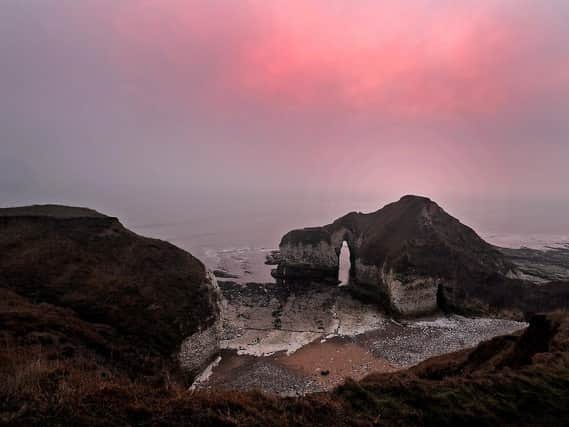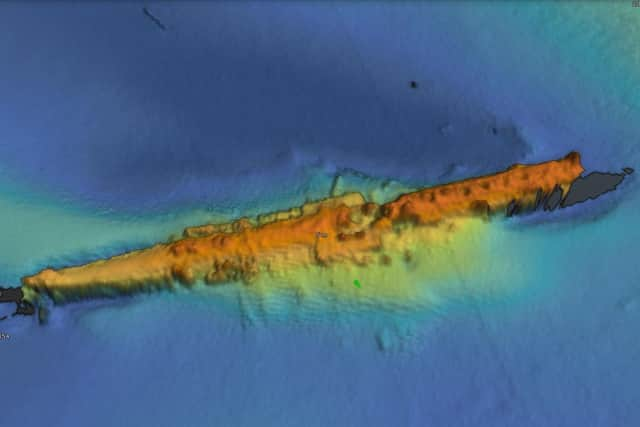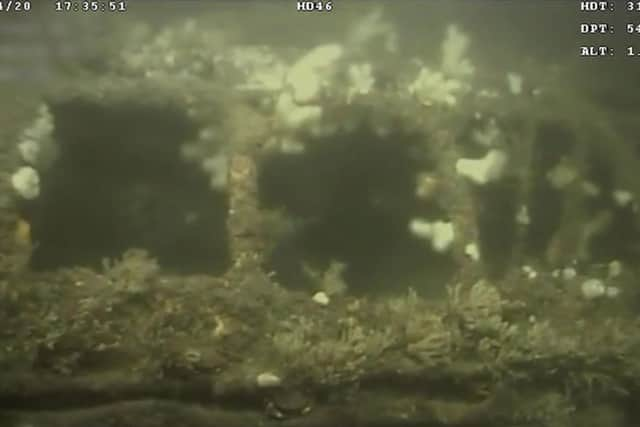World War One submarine sunk off Flamborough Head surveyed for the first time


Sophisticated scanning and video techniques were used to analyse the remains of UC-47, which lies on the seabed around 20 nautical miles from Flamborough Head.
The submarine was considered a 'lucky vessel' by the German Imperial Navy during World War One, as she was credited with sinking over 50 enemy ships in just a year.


Advertisement
Hide AdAdvertisement
Hide AdYet in 1917, she was ambushed by a Royal Navy patrol boat which rammed and depth-charged her, and she sank with the loss of the entire crew of 26 men.
The wreck was investigated by scientists hired by Tolmount Development, who are laying a new pipeline in the North Sea. Offshore survey companies MMT and Reach Subsea worked with deep sea archaeologists from the University of Southampton.
Using state-of-the-art robotics and high-resolution geophysical equipment, the wreck - which lies 50 metres below the surface - was mapped and inspected in detail and showed an 'astonishing' level of preservation, the team said.
The remains of the main hull, which was intact along its length, were visible above the seabed and the damage she suffered during her sinking was clear to see.


Advertisement
Hide AdAdvertisement
Hide AdA large hole on the port side was indicative of an explosion and scattered around the wreck site were parts of the vessel including one of the torpedo tubes.
Project co-director Dr Rodrigo Pacheco-Ruiz said: “Today the vessel is only marked on the navigation charts as a shipwreck and until now very little was known of the submarine’s condition.
“It has been a privilege to be able to explore a wreck in such good condition and have the opportunity to find out more about its past.”
Archaeologists hope it will be possible to return to the wreck in the future to gather more evidence about its fate and to solve a maritime espionage mystery.
Advertisement
Hide AdAdvertisement
Hide AdReputedly, Royal Navy divers were sent to the site of the sinking the day after her loss to retrieve code books and charts from the U-boat.
The experts hope that further investigations will ascertain whether this covert operation actually took place.
Senior German officials believed that the mission to find the secret papers - including a map of minefields - had been successful, but the new investigation suggests that it was unlikely divers ever penetrated the submarine.
Documents reveal that the patrol boat spent several days dropping further depth charges on the wreck, most likely in an attempt to blow holes in the hull through which papers might float to the surface.
Advertisement
Hide AdAdvertisement
Hide AdGerman archives will now be studied to determine why their naval officers believed the hull had been breached and the intelligence removed.
The British vessel spotted UC-47 by sheer chance on the morning of the attack - she was 200 yards away and seen just before dawn. The surprise assault was launched within 15 seconds of the sighting and she was rammed at a speed of 17 knots. The hull was severely damaged and began to fill with water before the depth charge was dropped to administer the fatal blow.
The patrol boat remained at the site for three days.
Sonar images of the wreck have now been released.
Comment Guidelines
National World encourages reader discussion on our stories. User feedback, insights and back-and-forth exchanges add a rich layer of context to reporting. Please review our Community Guidelines before commenting.